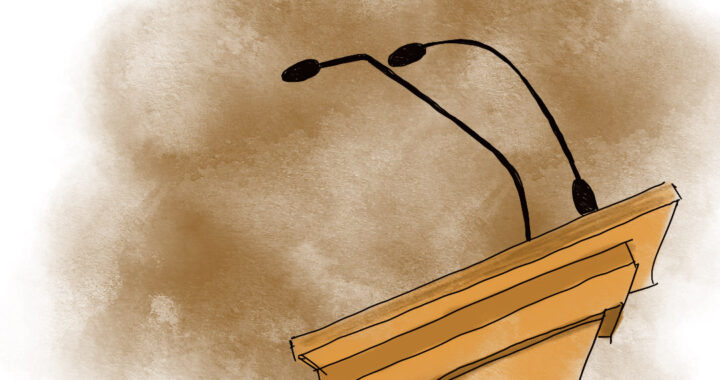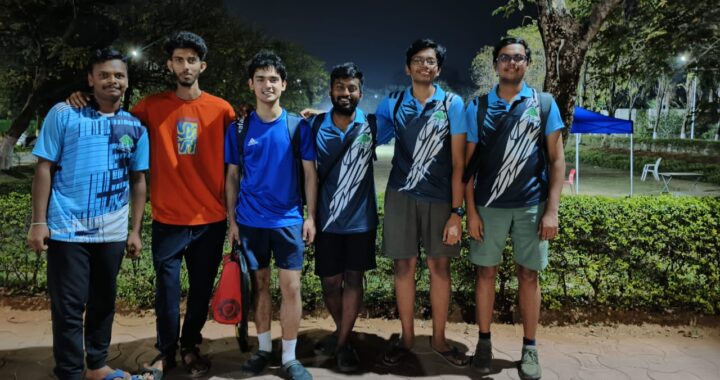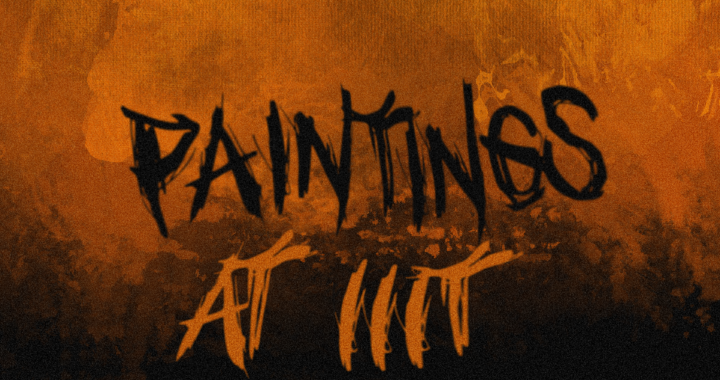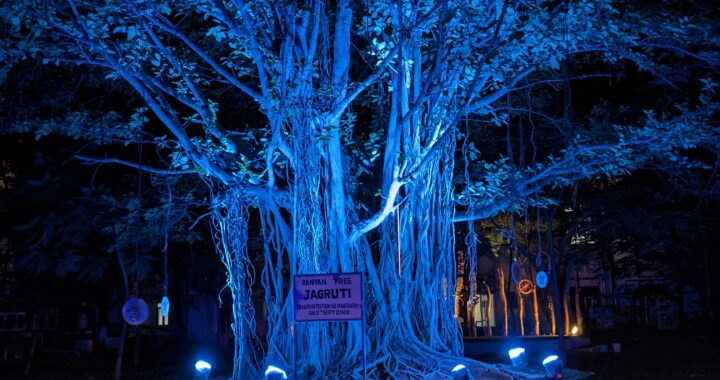Mirror, Mirror on the wall, can I get a match at all?

Assignments, deadlines, and exams forever looming on the horizon, who actually has time to get out there and meet new people? In a college where a holiday means to most a couple of extra hours of sleep, dating apps like Tinder help tremendously to meet and interact with people outside of college. With everyone having heard about Tinder and knowing at least one person using it in college, it is clear that they have a significant impact on our lives.
Tinder is one of the most popular dating apps out there and has revolutionized modern dating. While it is the undoubted king, it is not without competition. TrulyMadly, Happn, Coffee meets Bagel etc, all offer the same functionality with their own unique take on it. For example, Coffee meets Bagel does away with the whole Right swiping Tinder is famous for. Rather it offers a match based on the information you gave when you signed up to provide one match a day every day at noon, for a more focused experience ( or so the folks at Coffee and Bagel claim ).
While the advantages are plenty, it is not without faults.
DATA! DATA! DATA!
“Data! Data! Data! I can’t make bricks without clay”
Sherlock Holmes
You cannot come to any conclusion without data. A survey was conducted across the campus, to find out how people were using dating apps and their experiences with it. 49 people responded to it. Only those who have used or had used any dating app were considered for the survey as the scope of the topic was not who uses it but rather how one uses it.
What dating apps do people predominantly use?
Not surprisingly, all those surveyed used Tinder. Some of the other dating apps which were popular include OkCupid and Truly Madly. While fundamentally all of them are the same, i.e help people meet others there are few differences.
Tinder offers an extremely easy set-up. One can set up a profile within minutes and by linking your social media like Facebook or Instagram, your likes, dislikes, and pictures can be automatically imported. Giving space only for a very short bio, people can quickly decide if they like the profile or not. With a slick UI and intuitive gestures, it has gathered a large user-base. With the increase in the number of users, the number of users signing up for Tinder increased as they had a higher probability of getting matched. Tinder originally required you to link it to Facebook, but now one can sign up with a phone number instead.
OkCupid, on the other hand, encourages long profiles. Users can answer multiple choice questions on a wide variety of topics including but not limited to, “Are your parents ugly?”, “Do you believe in dinosaurs?”, and my personal favourite: “Your a bit*h! What bothers you about the above sentence?”; with the options being Grammar, Profanity, Both, or None. Users can choose the level of importance of each question and decide if they should be publicly visible on their profiles. While OkCupid offers the classic Tinder swipe right if you like them and left if you don’t (they call it DoubleTake), users can also choose to be matched by the answers they gave. This thus leads to a greater chance of you meeting someone you’re compatible with.
TrulyMadly offers a more secure or safe environment. Users need a minimum 30 Trust score. These trust scores are gained by linking your Facebook, LinkedIn, or other social accounts. Signing up by Gmail for example, gives you only 10 points whereas Facebook gives you the required 30 you need to start interacting with the other users. Users also cannot see the names of other users unless they’ve matched, thus making it difficult for people to find you on other platforms. The matching happens based on compatibility and the algorithm used is very transparent. In place of a bio, users describe themselves with a maximum of 5 pre-written hashtags.
Who uses Tinder the most?
As an engineering college, it is expected for most people using Tinder to be male. While IIIT has approximately an 80:20 sex ratio (Exact values can be found in the NIRF report available here https://www.iiit.ac.in/nirf-report/) at least 90% of the surveyed were male.
With Section 377 (Unnatural Offences) of the Indian Penal Code which talks about among other things the criminalization of consensual sex between the same gender in private, being scrapped to allow the LGBT community to carry on with their lives with dignity, the number of LGBT users on dating apps shot up. Among the surveyed the majority of the users are heterosexual but three non hetero users were present too.
Matches: Behind the Scenes
A variety of factors play in the finicky game of getting matches. It’s not just your looks or your bio. One of the few meta factors were the frequency of usage. It was observed that the most frequent users were not the most successful ones. When rating regularity of usage on a scale of 1 to 5 (1 being rare usage and 5 being daily), users reporting 3s or 4s were usually among the most matched. Tinder does some spam detection with marking users who right swipe everybody. It could also be the case that in the initial few weeks, users who get matches are more likely to continue using the app compared to those who don’t and thus might be discouraged to use it more.
Another of the factors was your bio. Your bio matters a lot with some users ranking it more important to them than your pictures.
Now coming to the most important question, how often does somebody get matched? The number varies wildly based on gender, with the ladies getting nearly three times as much as the average guy. On a scale of 1-5 with 1 being rarely if ever and 5 being very often, all the ladies responded with 5 while most of the guys were at 1s and 2s. India’s skewed ratio and the skewed representation on these apps has led to such an oversaturation of dudes that many feel the average person has little to no chance.
Say you’re matched. What happens then? First impressions usually set the tone and most people go with something they picked up from the bio. A pun, a witty joke, some interesting trivia. Popular games like 20 questions also seem to work out well and it’s always to get to know your date before actually meeting them. Pick up lines are another go-to tool for opening a conversation but may not always work. “How much does a polar bear weigh? Enough to break the ice” and the like seemed to work better than the usual run of the mill pick up lines.
Nearly 70% of those surveyed reported to never meeting their matches in real life. A meagre 15% of all matches actually end up meeting their matches. Scheduling conflicts and the expenses involved like in the case of your match being 10km away all contribute to the lack of real-world interaction between matches. Due to all these factors and the apps being usually used for quick hookups, it’s not easy to get into an actual serious long term relationship with the help of these apps. But don’t give up hope for this if you want as nearly 10% of those surveyed did have a long term relationship with people they met from the app. While this is a tiny fraction, one has to keep in mind that less than 15% get consistently matched.
Does being an IIITian help your chance?
Matrimony websites are filled with ads looking for people of wheatish skin tones, slim body and quite often the IIT tag. It is not unreasonable to expand on this notion and believe that being from colleges like IIT or IIIT would boost your chances. Or is it? The most common reaction when someone found out that their match was from IIIT was “What’s that?’, with one person going so far as to say “What’s IIIT? Is it like a fake IIT or something?”. The most common reaction for those in the know can be put ever so succinctly in one word. NERD. Some even ask about the most effective coaching centres or books used to crack JEE. To summarise, IIIT being relatively new and thus not very well known, does not seem to make much of a difference but those who know about IIIT as one user puts it “Go crazy about it”.
How safe do people feel using dating apps?
Meeting strangers is all well and good but how do you know that these strangers are not going to kill you. Sadly enough this is not just a thought experiment. Tinder Serial Killers exist and for all we know walk amongst us. Perhaps the most famous amongst them is Danuel Drayton a 27-year-old man from Connecticut. His Modus Operandi was to meet people through dating apps like Tinder or Ridesharing apps like Uber. He used to lure them away after their dates and then assault and murder them. One may say this would not happen in a country like ours, but as recently as Sept of 2018, a man was murdered in Jaipur. His date planned on kidnapping him for ransom, and when she realized that he had lied about his financial status and the ransom could not be arranged, she along with her partner murdered him.
Dating apps especially those like Tinder with little to no verification are fertile grounds for catfishing. While many are just spam bots, there could be problems with disastrous consequences. Consider the case of u/anglswa, a 21-year-old man from Australia who was dating a girl he met on Tinder. One fine day around three months into his relationship he was asked to fetch some cash from his girlfriend’s wallet and he chanced upon her id which put her age at 15. Her reported age on Tinder was 19. This whole incident might send him to prison for statutory rape, all because he dated a girl who looked and acted 19 but was not.
Coming back to IIIT, when asked to rate their interaction with the people they meet in the apps, on a scale of 1-5 with 1 being very good and 5 being very bad most users rated a 3. With an abundance of fake accounts and catfishing being prevalent, precautions need to be taken if you’re going to use them to date. Among those surveyed, one user recalls of an incident where some random person found her Tinder profile, got his hands on her number through unknown means and texted her, “I’m waiting below your hostel, come out”.
A simple Hello could lead to a billion things
Just because of a few sour grapes, one does not stop eating all grapes. Similarly, while there can be and you probably might have experienced some unpleasantness, one should not stop meeting new people provided you take precautions and keep your safety and well being in mind. With 26 million matches happening per day across the world, there is a significant chance that you can find somebody you like and are compatible with. 13% of all couples formed from dating apps are either married or engaged, and the numbers are increasing with every passing year as the apps permeate deeper into the popular culture.
It is true that the primary purpose of these apps is dating and finding a partner, but they are used for a variety of other reasons too. There is a large number of people who use Tinder while travelling to get recommendations from locals. They use it to get a better grasp of new languages. People have even used Tinder to find investors for their ideas. All the world’s a stage and it’s up to you to grasp every little opportunity that comes your way.
Will these trends hold?
Roughly 70% of the surveyed were using Tinder and the like for more than a month, with nearly 20% of them using it for more than a year. Thus there is a regular user base and it is growing especially in countries like ours with a growing educated youth population. This trend is clearly observed with around 10% of those surveyed using Tinder for less than a week. Traditionally in Indian culture, arranged marriages were the norm, with matrimony websites like Bharat Matrimony and shaadi.com having over 35 million users. But this trend is gradually changing.
Comparing with one of the popular matrimony sites BharatMatrimony.com using Google Trends our conclusion is justified. WIth Tinder slowly but surely overtaking the popularity of BharatMatrimony.

Over the course of the last five years, BharatMatrimony represented by blue here was massively higher with Tinder represented by red having a negligible share in the market. But today Tinder has overtaken BharatMatrimony and is increasing at a sharp rate.
Dating apps are going to have a much greater influence on society in the coming years, with marriages between people meeting on dating apps becoming the norm rather than the oddity it is today.

 Cleaning up the Mess?
Cleaning up the Mess?  The Mess-y Situation
The Mess-y Situation  Qu’ils mangent de la grenouille! (Let Them Eat Frogs!)
Qu’ils mangent de la grenouille! (Let Them Eat Frogs!)  Tale of Two Cheenties
Tale of Two Cheenties  Peace of mind.
Peace of mind.  Boats and Valorant
Boats and Valorant  A perspective on sports in IIIT
A perspective on sports in IIIT  Paintings of IIIT
Paintings of IIIT  The Tale of Jagruti
The Tale of Jagruti
1 thought on “Mirror, Mirror on the wall, can I get a match at all?”
Comments are closed.